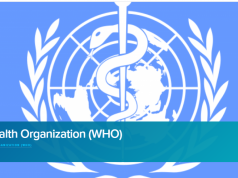If one googles “Fentanyl in Vapes,” countless headlines describing incidents where hospitalized teens unknowingly consumed Fentanyl via vapes, as well as reports and statements by authorities such as the DEA pop up on one’s screen. The media are claiming that fentanyl-laced nicotine vapes are an alarming new trend that may be poisoning kids.
PharmChek explained that when inhaled via vape devices, chemicals enter the bloodstream more quickly, and this quick absorption can further increase the risk of overdose, making it harder for users to seek help on time.
Fearmongering at its best
However in an episode on RegWatch, Executive Director of the Vapor Technology Association (VTA) Tony Abboud, said that evidently anti-vape advocates are trying to create fear around nicotine vapes by making all vapes sound unsafe. Some headlines are even claiming that disposable vapes are being imported from China already laced with the drug, clearly trying to cast an even darker cloud on disposables.
On asking Canadian THR expert David Sweanor, what his take on the matter is, he told Vaping Post that sadly this kind of fearmongering is common practice among prohibitionists. “It is very common for abstinence-only aficionados to promote scare stories about the things they don’t like. The movie Reefer Madness is a classic example, but so too have been campaigns about ‘crack babies’, birth control pills causing cancer, artificial sweeteners being deadly, etc.
These campaigns are promoted by the same people who have long engaged in other outright information on their topics of choice. Through their motivation are typically moralistic, their behaviors are ironically immoral.”
He highlighted that ultimately the problem of contaminated products is promoted by the same people advocating for prohibition. If the products were regulated, the presence of dangerous devices would be minimal and so would be the existence of the black market.
“Furthermore, the threat of contaminated vapes stems largely from much of the business having been made illicit by policies pushed by these same people. If they actually cared about health, they could start by giving non-misleading information to the public about the relative risks of nicotine products. They could also push to have an appropriately regulated market that gives consumers acceptable massively lower risk alternatives to cigarettes so that there is no basis for an illicit market.”
The damage done by sharing inaccurate facts
Sadly this onslaught of misinformation may be effective in deterring people from the safer alternatives. A study published in the Journal of Health Psychology found that listening to stories about the impact of vaping, motivates vapers to quit. Babac Salmani, a PhD candidate in the Faculty of Health Sciences, looked for changes in intention and behaviour after vapers watched a short video explaining the potential health risks.
Titled, “Using a protection motivation theory framework to reduce vaping intention and behaviour in Canadian university students who regularely vape: A randomized controlled trial,” the study analysed the intentions of vapers after watching a short film featuring health care professionals and people who used to vape talking about current research and the risks.
The compiled responses indicated that most of the vapers who watched the eight-minute video were resolved to quit as a result. “Immediately after watching the intervention, they’re like ‘I want to stop.’ What’s really important to us is the consistency in that intention—it maintained a level of strength in terms of people wanting to stop vaping.”” said Salmani.
Another recent study titled, “Confidence in nicotine for tobacco harm reduction—Bridging the policy–practice gap,” discussed how despite the decades of research highlighting that other components not nicotine, are the harmful agents in cigarettes, the misinformation about nicotine remains rife. In fact while in many countries vapes are endorsed as tobacco harm reduction and smoking cessation tools, in many others“the potential role of ‘clean’ nicotine alternatives to reduce the harms from tobacco is, however, not being translated into practice.”
The misperceptions among healthcare professionals, adds the paper, is proving a hurdle to “effective tobacco control policymaking in many low- and middle-income countries and effective cessation support everywhere in the world.”
In a similar argument with a focus on vaping, another recent paper in the journal Addiction written by a number of acclaimed public public health experts, highlighted that vaping is the one area where there is widespread misreporting which should be addressed.
“We focus upon two specific examples that continue to be propagated by the US public health officials, despite evolving scientific data contradicting these assertions. As the recent US Surgeon General’s advisory on misinformation observed, ‘updating assessments and recommendations based on new evidence is an essential part of the scientific process.”








